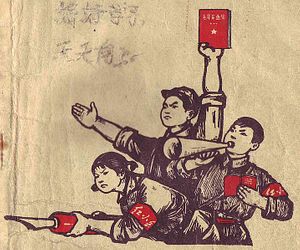How did China work its way out of the diplomatic isolation that ensued during the Cultural Revolution? A recent article in International History Review by Martin Albers traces the course of Beijing’s establishment of relations with France, the United Kingdom, and West Germany in the years immediately after the Cultural Revolution. The process holds important lessons for the re-entry of other pariah states into the good graces of international society, including Iran and North Korea.
While the diplomacy of Kissinger and Nixon looms large in the American mythology of the “opening” of China, Albers establishes that the diplomatic re-emergence of China began well before the Sino-American rapprochement of 1972. Even prior to the Cultural Revolution, the People’s Republic of China had pursued a revolutionary foreign policy posture. However, few countries abided by the same restrictions as the United States (and the United Nations) regarding the primacy of the Nationalist regime in Taiwan; even during the PRC’s periods of diplomatic belligerence, it enjoyed a wide range of diplomatic relationships with the Communist and developing worlds. Nevertheless, Beijing struggled to make inroads in Western Europe.
Cold War dynamics complicated the picture. While France and China were a natural fit (France sought to carve a space for itself outside the U.S.-dominated NATO system, while China pursued a foreign policy independent of both Russia and the United States), the United Kingdom and West Germany struggled to connect with Beijing. In the case of the U.K., the need to cooperatively manage issues associated with Hong Kong loomed large behind any rapprochement, as did London’s special relationship with the United States. For Germany, Willy Brandt’s Ostpolitik policy, designed to reduce tensions with the Soviet Union and the Warsaw Pact, threatened to leave China out in the cold. However, both countries surmounted these difficulties and established (or re-established) cordial relations around the same time as the Kissinger mission.
As Garret Martin’s review of the article suggests, Albers gives us only a limited window into Chinese thinking on diplomatic re-engagement. At the time, some of the fires of the Cultural Revolution continued to burn hot, making diplomatic engagement with the capitalist world a dicey prospect from a bureaucratic point of view. Nevertheless, Beijing accomplished its broad, long-term goal of finding its way back into the good graces of the Western world.
The Chinese experience suggests that re-entry to international society can happen piecemeal, without a larger, coordinated strategy for rehabilitation. The Chinese experience may most closely presage that of Iran, which has already begun to establish important linkages with European countries. It also suggests that the United States only has a limited degree of control over how states can find their way back into polite international society. Finally, the success that countries like France and the United Kingdom enjoyed in re-establishing relations with China raises important questions about the diplomatic strategy undertaken by Kissinger and Nixon in 1972, which relied on the murderous regime of Pakistani dictator Yahya Khan to facilitate connections between Washington and Beijing. Other avenues, apparently, were available.

































